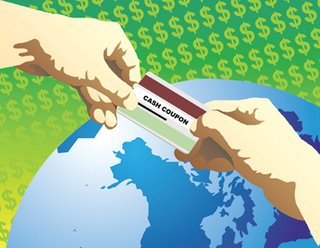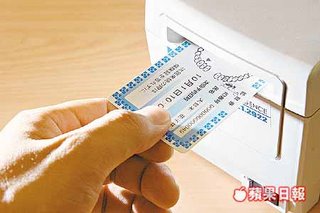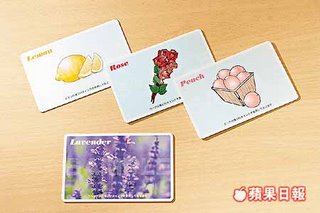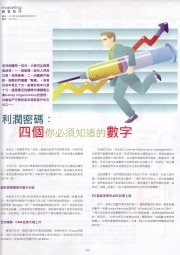1. Build staff loyalty
It's a fact: firms with high levels of customer loyalty have also earned high levels of staff loyalty. It's darn near impossible to build strong customer loyalty with a staff that is in constant turnover.
Why? Because customers buy relationships and familiarity. They want to buy from people who know them and their preferences. Key rule of loyalty: serve your employees first so that they, in turn, can serve your customer.
2. Practice the 80/20 rule
In building customer loyalty, the 80/20 rule is alive and well. Roughly speaking, 80% of your revenue is being generated by 20% of your customers.
All customers are not created equal. Some represent more long-term value to your firm than others. A smart company segments customers by value and monitors activities closely to ensure high-value customers get their fair share of special offers and promotions. Unlike many firms that simply measure overall redemption, these savvy loyalty builders pay close attention to who redeems.
3. Know your loyalty stages and ensure that your customers are moving through them
Customers become loyal to a company and its products and service one step at a time. By understanding the customer's current loyalty stage, you can better determine what's necessary to move that customer to the next level of loyalty. There are six stages of customer loyalty: suspect, prospect, first-time customer, repeat customer, client and advocate.
If your customer relationship processes and programs aren't moving customers forward, rethink them.
4. Serve first, sell second
Today's customers are smarter, better informed and more intolerant of “being sold” than ever before. They expect doing business with you to be as hassle-free and gratifying for them as possible.
When they experience good service elsewhere, they bring a if-they-can-do-it-why-can't–you attitude to their next transaction with you. They believe that you earn their business with service that is pleasant, productive and personalized; and if you don't deliver, they'll leave.
5. Aggressively seek out customer complaints
For most companies, only 10% of complaints get articulated by customers. The other 90% are unarticulated and manifest themselves in many negative ways: unpaid invoices, lack of courtesy to your frontline service reps and, above all, negative word of mouth.
With the Internet, an unhappy customer can now reach thousands of your would-be customers in a few keystrokes. Head off bad press before it happens. Make it easy for customers to complain, and treat complaints seriously. Establish firm guidelines regarding customer response time, reporting and trend analysis. Make employee complaint monitoring a key tool for executive decision making.
6. Stay responsive
Research shows that responsiveness is closely tied to a customer's perception of good service. The advent of the Internet has changed the customer's perception of responsiveness. More and more, customers are coming to expect round-the-clock customer service.
Moreover, customers now arrive at Web sites time-starved and eager to locate answers. Technology tools such as customer self-service, email management and live chat/Web callback are proving increasingly critical for companies as they address the demanding customer's responsiveness needs.
7. Know your customer's definition of value
The loyalty password is “value.” Knowing how your customers experience value and then delivering on those terms is critical to building strong customer loyalty.
But knowing your customer's true definition of value is not easy, because your customers' value definitions are constantly changing. Invest in customer loyalty research that enables you to understand, through the eyes of the customer, how well you deliver value.
8. Win back lost customers
Research shows that a business is twice as likely to successfully sell to a lost customer as to a new prospect. Yet, winning back lost customers is frequently the most overlooked source for incremental revenue in many firms.
Why? Because most firms consider a lost customer a lost cause. With the average company losing 20-40% of its customers every year, it's imperative that firms create hard-working strategies not only for acquisition and retention but also for win-back. Since no customer retention program can be 100% foolproof, it follows that every company needs a process for recapturing those high-value customers who depart. Think of it as loyalty insurance.
9. Use multiple channels to serve the same customers well
Research suggests that customers who engage with a firm through multiple channels exhibit deeper loyalty than single-channel customers. But take note: this finding assumes that customers get the same consistent service whether coming into the store, logging on the Web site or calling the service center.
To achieve consistency, your firm must internally coordinate sales and service across multiple channels so that customer preferences are accessible no matter how the customer chooses to interact. Today's customers expect to hop from channel to channel, and they expect good service to follow.
10. Give your frontline the skills to perform
Increasingly, for many companies, the employee “frontline” is a call center where agents interact with customers. These agents will be the “loyalty warriors” of the future. Converged call centers that bring together multi-channel access points (phone, fax, email, Web) are on the rise.
Gartner Group estimates that 70% of North America's call centers will migrate to multi-channel contact centers by 2005. This means that those agents need to be as equipped to write a well-written email reply and navigate the company Web site as they are in being helpful and friendly on a phone call.
11. Collaborate with your channel partners
In today's complex marketplace, a firm is often dependent on many suppliers to help serve its customers. Embracing these supply chain relationships for the greater good of the ultimate customer creates customer value that is hard for competitors to match.
For example, a European auto manufacturer converted its customer data base program into a system that could be shared by all channel partners. By refusing to hoard the information, the manufacturer helped create a blended channel strategy that built greater customer loyalty throughout the distribution chain.
12. Store your data in a centralized database
Most firms lack a 360-degree view of their customer because they have no centralized database. Billing departments, sales divisions and customer service centers might all have their own databases, with no effective means for creating a complete customer-information composite.
To effectively implement a sound customer loyalty strategy, data from all customer touchpoints must be combined into a centralized customer database. Without it, the firm is greatly handicapped in its efforts to serve the customer.
by Jill Griffin
In this blog, we will share articles and videos on the recent trends of Database Marketing & Customer Relationship Management policy and system. 在這個網誌,我們會跟各位朋友分享有關數據庫行銷及「客戶忠誠計劃」趨勢的最新文章及影片。
7/24/2006
Strategize And Plan For Loyalty
"It takes a lot less money to increase your retention of current customers than to find new ones-but I know I don't give it as much effort as I should because it does take a lot of energy and effort!"
Do you even have a specific plan for building customer loyalty?
I bet you haven't given it as much thought as you should- because to tell the truth I need to give it more effort also.
If you currently retain 70 percent of your customers and you start a program to improve that to 80 percent, you'll add an additional 10 percent to your growth rate.
Particularly because of the high cost of landing new customers versus the high profitability of a loyal customer base, you might want to reflect upon your current business strategy.
These four factors will greatly affect your ability to build a loyal customer base:
1/ Products that are highly differentiated from those of the competition.
2/ Higher-end products where price is not the primary buying factor.
3/ Products with a high service component.
4/ Multiple products for the same customer.
Market To Your Own Customers!
Giving a lot of thought to your marketing programs aimed at current customers is one aspect of building customer loyalty.
When you buy a new car, many dealers will within minutes try to sell you an extended warranty, an alarm system, and maybe rustproofing. It's often a very easy sale and costs the dealer almost nothing to make. Are there additional products or services you can sell your customers?
Three years ago my house was painted, and it's now due for another coat. Why hasn't the painter called or at least sent a card? It would be a lot less expensive than getting new customers through his newspaper ad, and since I was happy with his work I won't get four competing bids this time. Keep all the information you can on your customers and don't hesitate to ask for the next sale.
Use Complaints To Build Business!
When customers aren't happy with your business they usually won't complain to you - instead, they'll probably complain to just about everyone else they know - and take their business to your competition next time. That's why an increasing number of businesses are making follow-up calls or mailing satisfaction questionnaires after the sale is made. They find that if they promptly follow up and resolve a customer's complaint, the customer might be even more likely to do business than the average customer who didn't have a complaint.
In many business situations, the customer will have many more interactions after the sale with technical, service, or customer support people than they did with the sales people. So if you're serious about retaining customers or getting referrals, these interactions are the ones that are really going to matter. They really should be handled with the same attention and focus that sales calls get because in a way they are sales calls for repeat business.
Reach Out To Your Customers!
Contact . . . contact . . . contact with current customers is a good way to build their loyalty. The more the customer sees someone from your firm, the more likely you'll get the next order. Send Christmas cards, see them at trade shows, stop by to make sure everything's okay.
Send a simple newsletter to your customers-tell them about the great things that are happening at your firm and include some useful information for them. Send them copies of any media clippings about your firm. Invite them to free seminars. The more they know about you, the more they see you as someone out to help them, the more they know about your accomplishments-the more loyal a customer they will be.
Loyal Customers and Loyal WorkforcesBuilding customer loyalty will be a lot easier if you have a loyal workforce-not at all a given these days. It is especially important for you to retain those employees who interact with customers such as sales people, technical support, and customer-service people. Many companies give a lot of attention to retaining sales people but little to support people. I've been fortunate to have the same great people in customer service for years-and the compliments from customers make it clear that they really appreciate specific people in our service function.
The increasing trend today is to send customer-service and technical-support calls into queue for the next available person. This builds no personal loyalty and probably less loyalty for the firm. Before you go this route, be sure this is what your customers prefer. Otherwise I'd assign a specific support person to every significant customer.
One last thing-don't tell your customers your 800 line phone number is for orders only!
Source : Streetwise Business Tips
Do you even have a specific plan for building customer loyalty?
I bet you haven't given it as much thought as you should- because to tell the truth I need to give it more effort also.
If you currently retain 70 percent of your customers and you start a program to improve that to 80 percent, you'll add an additional 10 percent to your growth rate.
Particularly because of the high cost of landing new customers versus the high profitability of a loyal customer base, you might want to reflect upon your current business strategy.
These four factors will greatly affect your ability to build a loyal customer base:
1/ Products that are highly differentiated from those of the competition.
2/ Higher-end products where price is not the primary buying factor.
3/ Products with a high service component.
4/ Multiple products for the same customer.
Market To Your Own Customers!
Giving a lot of thought to your marketing programs aimed at current customers is one aspect of building customer loyalty.
When you buy a new car, many dealers will within minutes try to sell you an extended warranty, an alarm system, and maybe rustproofing. It's often a very easy sale and costs the dealer almost nothing to make. Are there additional products or services you can sell your customers?
Three years ago my house was painted, and it's now due for another coat. Why hasn't the painter called or at least sent a card? It would be a lot less expensive than getting new customers through his newspaper ad, and since I was happy with his work I won't get four competing bids this time. Keep all the information you can on your customers and don't hesitate to ask for the next sale.
Use Complaints To Build Business!
When customers aren't happy with your business they usually won't complain to you - instead, they'll probably complain to just about everyone else they know - and take their business to your competition next time. That's why an increasing number of businesses are making follow-up calls or mailing satisfaction questionnaires after the sale is made. They find that if they promptly follow up and resolve a customer's complaint, the customer might be even more likely to do business than the average customer who didn't have a complaint.
In many business situations, the customer will have many more interactions after the sale with technical, service, or customer support people than they did with the sales people. So if you're serious about retaining customers or getting referrals, these interactions are the ones that are really going to matter. They really should be handled with the same attention and focus that sales calls get because in a way they are sales calls for repeat business.
Reach Out To Your Customers!
Contact . . . contact . . . contact with current customers is a good way to build their loyalty. The more the customer sees someone from your firm, the more likely you'll get the next order. Send Christmas cards, see them at trade shows, stop by to make sure everything's okay.
Send a simple newsletter to your customers-tell them about the great things that are happening at your firm and include some useful information for them. Send them copies of any media clippings about your firm. Invite them to free seminars. The more they know about you, the more they see you as someone out to help them, the more they know about your accomplishments-the more loyal a customer they will be.
Loyal Customers and Loyal WorkforcesBuilding customer loyalty will be a lot easier if you have a loyal workforce-not at all a given these days. It is especially important for you to retain those employees who interact with customers such as sales people, technical support, and customer-service people. Many companies give a lot of attention to retaining sales people but little to support people. I've been fortunate to have the same great people in customer service for years-and the compliments from customers make it clear that they really appreciate specific people in our service function.
The increasing trend today is to send customer-service and technical-support calls into queue for the next available person. This builds no personal loyalty and probably less loyalty for the firm. Before you go this route, be sure this is what your customers prefer. Otherwise I'd assign a specific support person to every significant customer.
One last thing-don't tell your customers your 800 line phone number is for orders only!
Source : Streetwise Business Tips
7/21/2006
如何留住你的VIP 「客戶忠誠計劃」的元素
 請現在就檢查一下你的口袋和銀包,看看內裡有多少張優惠劵、印花咭、現金劵、免費試做單張……。一定有很多吧!是的!很多零售業都用這種工具來吸引客人「重訪」。若你問這些零售業老闆:你有否在搞「客戶忠誠計劃」(Customer Loyalty Program)?他必定這樣回答:有啊!你看!我們派出了很多優惠劵、印花咭、現金劵和免費試做單張!不過,讓我斗膽在此宣告:這些「乜券物劵」就連「客戶忠誠計劃」的入門也不能作算!
請現在就檢查一下你的口袋和銀包,看看內裡有多少張優惠劵、印花咭、現金劵、免費試做單張……。一定有很多吧!是的!很多零售業都用這種工具來吸引客人「重訪」。若你問這些零售業老闆:你有否在搞「客戶忠誠計劃」(Customer Loyalty Program)?他必定這樣回答:有啊!你看!我們派出了很多優惠劵、印花咭、現金劵和免費試做單張!不過,讓我斗膽在此宣告:這些「乜券物劵」就連「客戶忠誠計劃」的入門也不能作算!上面那一段文字或許會讓部分讀者感到不好受,對不起!我也只是有話直說。老實講,今時今日,不少零售集團仍然沿用這種過時的方法,還以為自己在搞「客戶忠誠計劃」,這確實是一種普遍的誤解!就讓我們首先在此給「客戶忠誠計劃」一個清晰的定義:
「客戶忠誠計劃」的必備「組件」
「客戶忠誠計劃」必須能讓商戶更認識每一位客人的購買習性,從而讓商戶可以對客人進行「個性化行銷」(Personalized Selling)。
基於上述的定義,一個全面的「客戶忠誠計劃」必須具備下述的「組件」(Module):
– 辨識你的客人(Identify Your Customer)
– 捕捉客人每次的交易資訊 (Data Capture)
– 分析客人的購買喜好、習慣 (Data Analysis)
– 獎賞你的「貴客」,激勵他們重複消費(Reward Your VIP)
一切始於「會員制度」
從這個全面的定義檢視之下,那些「乜券物券」就連第一步,即辨識你的客人,也辦不到。究竟是誰在使用這些優惠券?客人走進店子,拿出Coupon,取去貨品,走出大門,銷售人員也不知道客人的芳名,更遑論如何再次聯絡他們或進行所謂的「個性化行銷」了。
所以任何「客戶忠誠計劃」都必須始於設立「會員制度」(Membership System),換言之,你必須賦予每一位客人一個獨特(unique)的身份,稱之謂會員號碼。以後,他進入你的店子進行交易時,你都會記錄下他的活動,包括他來訪的日期、購買的貨品或使用的服務、曾否使用積分換領禮品、曾否換領什麼禮品……。
數據「推拿」得出「報表」
有了這些「數據」(Data)之後,就可以進到下一步,也就是資料分析了。對此,資訊科技界創造了一個很形象化的詞彙,叫Data Massage,直譯就是「數據推拿」。經過推拿之後,就可以得出一些具參考價值的「資料」(Information),通常這些資料是以「報表」(Report)的形式出現,而這些「報表」正是所有的「客戶忠誠計劃」的精粹所在。
由VIP到VIC
這些「報表」會告訴我們:誰才是真正的「貴客」(Very Important Person VIP)!什麼是「貴客」呢?簡言之,就是那些利潤率最高的客人。這些「報表」包括:最高來訪頻率、最高消費金額、介紹最多新客的會員。知道了這些VIP之後,你就可以好好地「維繫」(Retain)他們,最佳的方法是「獎賞」(Reward)他們。「獎賞」的方法可以是給予折扣、禮品、現金回贈等,甚至是一些「特權」(Privilege),讓這一批Very Important Customers(VIC)感到獲得尊重,因而跟你建立一種「忠誠」(Loyal)的關係。
正如前文曾提及「80/20法則」,即任何生意都有20%的VIC提供着80%的利潤,辨識這班VIC變得十分重要。我們可用更好的人才、花更多時間於他們身上,這樣做不但可以確保80%的利潤,甚至可以從他們那裡得到更多生意,增加利潤。
積分制度乃大勢所趨
說到獎賞你的「貴客」,你必須設定一個客觀的準則,客人要怎樣才可獲得「獎賞」?而你的員工亦必須按照同樣的規則辦事,否則就會出現「親疏有別」或「大細超」的狀況,最危險的狀況是真正的「貴客」反而受到疏忽。
目前,全球最流行的獎賞準則是「積分制度」(Bonus Point System),消費金額與積分構成一個正比例的關係,商戶按着客人的積分狀態來給予相應的獎賞。我稱積分是目前最流行的獎賞制度並非隨便說說,請看各大航空公司、銀行的信用咭服務、八達通和超市都在大搞「積分回贈計劃」。積分制度之所以獲得重用並非偶然,它確實具備致勝的優點,我將在下篇詳細解說。
各式報表提升競爭力
再來回說報表吧!正如前述,報表主要是辨識誰才是真正的「貴客」。不過,報表的作用還不止於此。各種各樣的報表讓老闆或管理者知道,那一間店舖招來最多會員、那一個店員曾被投訴、那一個套票最受歡迎、未付帳款的情況……;營業部的同事則可從報表知道,個別客戶的套票狀態、購買記錄,好作進一步的行銷;市場部的同事則可知道,那一個獎賞計劃受歡迎、那一個宣傳計劃的回應率最高……。
有了這些報表,公司裡各個部門的人員就可以更清楚自己的工作效果,並作出相應的改進,公司的競爭力就可獲大大提升。
主動出擊 免客戶流失
要獲得上述的果效和好處,必須引用一些工具,市面上有各種所謂的「客戶忠誠系統」(Customer Loyalty System)或是「客戶關係管理系統」(CRM System),主要的功能就是收集客戶每次消費的數據(Data Capture),和整理、運算(Data Analysis)有關的數據。
零售業市場愈來愈激烈,大部份的零售企業面對的一大頭痛問題就是客戶流失,「客戶忠誠系統」就是要將每一個客戶的資料都好好地記錄下來,在客戶流失之前,你就可以主動地多做些工作去討好他們、留住他們。
沒有「客戶忠誠系統」的商戶,待客人逐漸流到競爭對手那裡,才急謀對策,已然太遲了!何況究竟誰流失了?何時流失?都不知道!更遑論要把客人挽回過來了。
作者簡介:徐少驊|Jeff 畢業於澳洲悉尼科技大學。先達智能有限公司創辦人及行政總裁,多年從事VIP、會員、客戶管理方案及諮詢服務,經常主講有關全球「客戶關係管理」(Customer Relationship Management, CRM)趨勢,為多間報刊撰寫企管文章。jeff@chinetekintel.com

此文原刊於Beauty & Hair 2006年7月號內
先 達 智 能 新 軟 件 助 商 戶 留 客
數 據 顯 示 , 90 年香 港 的 服 務 業 佔 整 體 生 產 總 值 75% ; 到 了 04 年 , 所 佔 比 率 上 升 至 90% , 尤 以 零 售 業 的 增 長 最 迅 速 。 踏入 06 年 , 第 一 季 零 售 總 銷 貨 價 值 比 去 年 同 期 上 升 6% , 當 中 3 月 份 零 售 業 總 銷 貨 價 值 高 達 179 億 港 元 。 徐 少 驊 及 馬 家 瑜 早 在 2003 年, 看 準 零 售 業 的 發 展 潛 力 , 遂 針 對 商 戶 常 用 的 會 員 制 、 儲 分 及 套 票 等 留 客 招 數 , 開 發 並 推 廣「 客 戶 忠 誠 計 劃 」 ( Customer Loyalty Programme ) 。
二 人 在 母 公 司 先 達 集 團 的 全 力 支 援 下 , 成 立 先 達 智能 , 以 零 售 及 服 務 業 為 對 象 推 廣 客 戶 忠 誠 計 劃 。 他 們 透 過 最 先 進 的 Mifare 智 能 及 熱 敏 感 重 寫 技 術 作 為 開 發 平 台 , 提 供 「 客 戶 忠 誠 系 統 」 ( LMS Plus ) 及 熱 敏 感 卡 打 印 機 , 商 戶 可 用 來 製 作 不 同 功 能 的 卡 , 如 會籍 、 套 票 、 積 分 、 預 約 或 預 付 卡 等 , 以 及 印 上 最 新 優 惠 資 訊 的 「 Show 誠卡 」 ( 即 熱 敏 感 卡 ) , 從 而 建 立 有 效 的 客 戶 忠 誠 計 劃 管 理 系 統 , 從 中 了 解 個 別 客 戶 的 消 費 模式 , 以 便 進 行 個 人 化 行 銷 , 務 求 留 住 舊 客 的 心 和 金 。
先 達 智 能 行 政 總 裁 徐 少 驊 指 出 : 「 做 生 意 首 重 成 本 效 益 , 而 推 行客 戶 忠 誠 計 劃 是 最 具 成 本 效 益 的 市 場 策 略 。 著 名 市 場 調 查 企 業 Gallop Organization 發 現 , 相 對 於 做 宣 傳 吸 引 新 客 , 向 舊 客 行 銷 僅 需 五 分 之 一 的 成 本 。 」
他 續 說 : 「 事 實 上 , 一 個 成 功 的 客 戶 忠 誠 計 劃 系 統 , 有 助 商 戶 把 資 源 花 在 最 有 利 潤 潛 力的 客 戶 身 上 , 減 少 浪 費 資 源 於 無 效 的 行 銷 工 作 上 。 商 戶 引 入 了 有 關 計 劃 , 就 不 需 再 經 常 藉 着減 價 促 銷 , 產 品 或 服 務 的 定 價 便 可 企 硬 , 進 一 步 保 障 利 潤 。 」
客 戶 忠 誠 系 統 加 上 熱 敏 感 卡 打 印 機 , 為 商 戶 維 繫 現 有 顧 客 。
Show 誠 卡 可 重 寫 500 次 , 方 便 印 上 會 籍 、 積 分 、 預 約 資 料 及 最 新 優 惠 資 訊 。
因 此 , 他 們 在 進 行 產 品 研 發 時 , 同 樣 從 個 人 化方 案 的 角 度 出 發 。 營 運 總 裁 馬 家 瑜 說 : 「 猶 太 人 的 智 慧 認 為 : 『 女 人 和 口 是 最 容 易 賺 錢 的 途徑 』 。 所 以 我 們 特 別 因 應 美 容 及 保 健 業 研 發 另 一 套 『 美 麗 中 心 系 統 』 ( BMS ) ; 日 後 更 會 針 對 餐 飲 業 及 品 味 消 費 , 如 紅 酒 、 巧 克 力 店 等 , 推 出 度 身 設 計 的 專用 管 理 系 統 。 」
開 業 3 年 , 先 達 智 能 已 累 積 了 逾 120 名 客 戶 , 其 間 從 未 流 失 任 何 客 戶 , 全 因 這 兩 位 「 留 客 」 專 家 待 客 有 道 。 徐 少 驊 明 言 :「 我 們 希 望 能 與 客 戶 建 立 互 信 關 係 , 並 不 計 較 眼 前 利 益 。 」
舊 客 可 獲 免 費 升 級
馬 家 瑜 補 充 : 「 雖 則 我 們 只 是 售 賣 電腦 軟 件 及 配 套 硬 件 , 但 每 次 向 客 戶 推 介 產 品 之 前 , 必 定 先 到 商 戶 的 店 面 進 行 觀 察 , 了 解 對 方的 運 作 模 式 及 不 足 之 處 , 以 便 在 商 談 過 程 中 作 出 實 際 建 議 。 我 們 也 非 常 樂 意 為 客 戶 提 供 免 費
的 專 業 意 見 , 甚 至 曾 經 協 助 客 戶 建 立 本 身 的 電 腦 系 統 。 」
建 立 本 身 的 電 腦 系 統 。 」
以 一 敵 七 贏 信 任
 去 年 5 月, 先 達 智 能 與 另 一 家 科 技 服 務 公 司 同 時 爭 取 某 連 鎖 零 售 店 的 合 約 , 結 果 落 選 。 過 了 幾 個 月 ,「 就 在 我 結 婚 當 天 , 竟 然 收 到 這 家 連 鎖 零 售 店 打 來 的 電 話 , 要 求 與 我 們 緊 急 洽 談 , 原 來 是 對家 公 司 出 了 問 題 … … 」 徐 少 驊 笑 說 : 「 這 可 說 是 最 好 的 結 婚 禮 物。 」 於 是 , 他 在 新 婚 翌 日 即 與 客 戶 開 會 , 得 悉 競 爭 對 手 提 供 的 熱 敏 感 卡 打 印 機 出 現 過 熱 問題 , 單 次 操 作 已 令 卡 身 變 曲 。 為 了 得 到 對 方 的 信 任 , 徐 少 驊 決 定 來 一 招 「 貨 比 貨 」 ─ ─ 在 客 戶 面 前 放 7 台 其 他 品 牌 的 打 印 機 ,與 他 們 代 理 的 打 印 機 同 步 進 行 測 試 , 以 一 敵 七 。 結 果 , 經 過 300 次 「 打 印 及 刪 除 」 的 操 作 後 , 熱 敏 感 卡 依然 平 直 如 新 , 成 功 贏 得 客 戶 信 任 , 生 意 失 而 復 得 。
去 年 5 月, 先 達 智 能 與 另 一 家 科 技 服 務 公 司 同 時 爭 取 某 連 鎖 零 售 店 的 合 約 , 結 果 落 選 。 過 了 幾 個 月 ,「 就 在 我 結 婚 當 天 , 竟 然 收 到 這 家 連 鎖 零 售 店 打 來 的 電 話 , 要 求 與 我 們 緊 急 洽 談 , 原 來 是 對家 公 司 出 了 問 題 … … 」 徐 少 驊 笑 說 : 「 這 可 說 是 最 好 的 結 婚 禮 物。 」 於 是 , 他 在 新 婚 翌 日 即 與 客 戶 開 會 , 得 悉 競 爭 對 手 提 供 的 熱 敏 感 卡 打 印 機 出 現 過 熱 問題 , 單 次 操 作 已 令 卡 身 變 曲 。 為 了 得 到 對 方 的 信 任 , 徐 少 驊 決 定 來 一 招 「 貨 比 貨 」 ─ ─ 在 客 戶 面 前 放 7 台 其 他 品 牌 的 打 印 機 ,與 他 們 代 理 的 打 印 機 同 步 進 行 測 試 , 以 一 敵 七 。 結 果 , 經 過 300 次 「 打 印 及 刪 除 」 的 操 作 後 , 熱 敏 感 卡 依然 平 直 如 新 , 成 功 贏 得 客 戶 信 任 , 生 意 失 而 復 得 。
此文刊於香港《蘋果日報》2006年5月18日 財經版B6 「一盤生意」 撰文:靈思 攝影:程志遠
二 人 在 母 公 司 先 達 集 團 的 全 力 支 援 下 , 成 立 先 達 智能 , 以 零 售 及 服 務 業 為 對 象 推 廣 客 戶 忠 誠 計 劃 。 他 們 透 過 最 先 進 的 Mifare 智 能 及 熱 敏 感 重 寫 技 術 作 為 開 發 平 台 , 提 供 「 客 戶 忠 誠 系 統 」 ( LMS Plus ) 及 熱 敏 感 卡 打 印 機 , 商 戶 可 用 來 製 作 不 同 功 能 的 卡 , 如 會籍 、 套 票 、 積 分 、 預 約 或 預 付 卡 等 , 以 及 印 上 最 新 優 惠 資 訊 的 「 Show 誠卡 」 ( 即 熱 敏 感 卡 ) , 從 而 建 立 有 效 的 客 戶 忠 誠 計 劃 管 理 系 統 , 從 中 了 解 個 別 客 戶 的 消 費 模式 , 以 便 進 行 個 人 化 行 銷 , 務 求 留 住 舊 客 的 心 和 金 。
先 達 智 能 行 政 總 裁 徐 少 驊 指 出 : 「 做 生 意 首 重 成 本 效 益 , 而 推 行客 戶 忠 誠 計 劃 是 最 具 成 本 效 益 的 市 場 策 略 。 著 名 市 場 調 查 企 業 Gallop Organization 發 現 , 相 對 於 做 宣 傳 吸 引 新 客 , 向 舊 客 行 銷 僅 需 五 分 之 一 的 成 本 。 」
徐 少 驊 ( 左 ) 主 力 市 場 推 廣 , 馬 家 瑜 ( 右 ) 專 責 營 運 事 宜, 二 人 有 如 前 鋒 與 龍 門 , 一 攻 一 守
他 續 說 : 「 事 實 上 , 一 個 成 功 的 客 戶 忠 誠 計 劃 系 統 , 有 助 商 戶 把 資 源 花 在 最 有 利 潤 潛 力的 客 戶 身 上 , 減 少 浪 費 資 源 於 無 效 的 行 銷 工 作 上 。 商 戶 引 入 了 有 關 計 劃 , 就 不 需 再 經 常 藉 着減 價 促 銷 , 產 品 或 服 務 的 定 價 便 可 企 硬 , 進 一 步 保 障 利 潤 。 」
客 戶 忠 誠 系 統 加 上 熱 敏 感 卡 打 印 機 , 為 商 戶 維 繫 現 有 顧 客 。
Show 誠 卡 可 重 寫 500 次 , 方 便 印 上 會 籍 、 積 分 、 預 約 資 料 及 最 新 優 惠 資 訊 。
因 此 , 他 們 在 進 行 產 品 研 發 時 , 同 樣 從 個 人 化方 案 的 角 度 出 發 。 營 運 總 裁 馬 家 瑜 說 : 「 猶 太 人 的 智 慧 認 為 : 『 女 人 和 口 是 最 容 易 賺 錢 的 途徑 』 。 所 以 我 們 特 別 因 應 美 容 及 保 健 業 研 發 另 一 套 『 美 麗 中 心 系 統 』 ( BMS ) ; 日 後 更 會 針 對 餐 飲 業 及 品 味 消 費 , 如 紅 酒 、 巧 克 力 店 等 , 推 出 度 身 設 計 的 專用 管 理 系 統 。 」
開 業 3 年 , 先 達 智 能 已 累 積 了 逾 120 名 客 戶 , 其 間 從 未 流 失 任 何 客 戶 , 全 因 這 兩 位 「 留 客 」 專 家 待 客 有 道 。 徐 少 驊 明 言 :「 我 們 希 望 能 與 客 戶 建 立 互 信 關 係 , 並 不 計 較 眼 前 利 益 。 」
舊 客 可 獲 免 費 升 級
馬 家 瑜 補 充 : 「 雖 則 我 們 只 是 售 賣 電腦 軟 件 及 配 套 硬 件 , 但 每 次 向 客 戶 推 介 產 品 之 前 , 必 定 先 到 商 戶 的 店 面 進 行 觀 察 , 了 解 對 方的 運 作 模 式 及 不 足 之 處 , 以 便 在 商 談 過 程 中 作 出 實 際 建 議 。 我 們 也 非 常 樂 意 為 客 戶 提 供 免 費
的 專 業 意 見 , 甚 至 曾 經 協 助 客 戶
 建 立 本 身 的 電 腦 系 統 。 」
建 立 本 身 的 電 腦 系 統 。 」
以 一 敵 七 贏 信 任
 去 年 5 月, 先 達 智 能 與 另 一 家 科 技 服 務 公 司 同 時 爭 取 某 連 鎖 零 售 店 的 合 約 , 結 果 落 選 。 過 了 幾 個 月 ,「 就 在 我 結 婚 當 天 , 竟 然 收 到 這 家 連 鎖 零 售 店 打 來 的 電 話 , 要 求 與 我 們 緊 急 洽 談 , 原 來 是 對家 公 司 出 了 問 題 … … 」 徐 少 驊 笑 說 : 「 這 可 說 是 最 好 的 結 婚 禮 物。 」 於 是 , 他 在 新 婚 翌 日 即 與 客 戶 開 會 , 得 悉 競 爭 對 手 提 供 的 熱 敏 感 卡 打 印 機 出 現 過 熱 問題 , 單 次 操 作 已 令 卡 身 變 曲 。 為 了 得 到 對 方 的 信 任 , 徐 少 驊 決 定 來 一 招 「 貨 比 貨 」 ─ ─ 在 客 戶 面 前 放 7 台 其 他 品 牌 的 打 印 機 ,與 他 們 代 理 的 打 印 機 同 步 進 行 測 試 , 以 一 敵 七 。 結 果 , 經 過 300 次 「 打 印 及 刪 除 」 的 操 作 後 , 熱 敏 感 卡 依然 平 直 如 新 , 成 功 贏 得 客 戶 信 任 , 生 意 失 而 復 得 。
去 年 5 月, 先 達 智 能 與 另 一 家 科 技 服 務 公 司 同 時 爭 取 某 連 鎖 零 售 店 的 合 約 , 結 果 落 選 。 過 了 幾 個 月 ,「 就 在 我 結 婚 當 天 , 竟 然 收 到 這 家 連 鎖 零 售 店 打 來 的 電 話 , 要 求 與 我 們 緊 急 洽 談 , 原 來 是 對家 公 司 出 了 問 題 … … 」 徐 少 驊 笑 說 : 「 這 可 說 是 最 好 的 結 婚 禮 物。 」 於 是 , 他 在 新 婚 翌 日 即 與 客 戶 開 會 , 得 悉 競 爭 對 手 提 供 的 熱 敏 感 卡 打 印 機 出 現 過 熱 問題 , 單 次 操 作 已 令 卡 身 變 曲 。 為 了 得 到 對 方 的 信 任 , 徐 少 驊 決 定 來 一 招 「 貨 比 貨 」 ─ ─ 在 客 戶 面 前 放 7 台 其 他 品 牌 的 打 印 機 ,與 他 們 代 理 的 打 印 機 同 步 進 行 測 試 , 以 一 敵 七 。 結 果 , 經 過 300 次 「 打 印 及 刪 除 」 的 操 作 後 , 熱 敏 感 卡 依然 平 直 如 新 , 成 功 贏 得 客 戶 信 任 , 生 意 失 而 復 得 。此文刊於香港《蘋果日報》2006年5月18日 財經版B6 「一盤生意」 撰文:靈思 攝影:程志遠
利潤密碼: 四個你必須知道的數字
 若你欲賺取一百元,大致可以有兩個途徑:一、做宣傳,吸引人們的注意,招來新客;二、向舊客戶推銷,鼓勵他們繼續「幫趁」。前者的成本是五十元,後者的成本則只須十元。這是著名的國際市場調查企業Gallup Organization的發現:向舊客戶行銷的成本是新客戶的五分之一。
若你欲賺取一百元,大致可以有兩個途徑:一、做宣傳,吸引人們的注意,招來新客;二、向舊客戶推銷,鼓勵他們繼續「幫趁」。前者的成本是五十元,後者的成本則只須十元。這是著名的國際市場調查企業Gallup Organization的發現:向舊客戶行銷的成本是新客戶的五分之一。換言之,向舊客戶的「荷包」拿錢要比新客戶更容易,利潤亦更高。Gallop的發現還不止於此,但歸結的重點都是:花多些精力維繫舊客戶是利潤的癥結所在。
今時今日,絕大部分零售業的市場推廣費用仍然是花在傳統的廣告上,扭開電視機、揭開報刊,大量的廣告撲面而來。這些廣告是給誰看的呢?當然是那些潛在客戶吧!有新客戶也有舊客戶啦!但應該是針對新客戶多一點!
重新客輕舊客失龐大利益
我曾多次苦口婆心的向那些行銷經理游說,何不抽調一些廣告費用,用於專門向舊客戶行銷的工具上呢?我所得到的答案是:上頭沒給這個預算(Budget)喎!一些有搞會員制度的公司,也不一定投放足夠的資源去推廣,以致會員的活躍度極低,會員資料庫成了虛有其表裝飾品。究其原因,是不少行銷人員仍然不了解向舊客行銷的龐大利益。
全球趨勢 CRM投資大幅上升
讓我們從另一個統計數字來看這個課題:根據META Group的調查,2001年全球企業花在CRM的使費上是20 Billion,到2003年則升至46 Billion,到2005年更躍升至146 Billion。
所謂的CRM,全名是Customer Relationship Management,亦即客戶維繫的專有名詞。我沒有將Billion譯寫成中文,是因為Billion在美國和法國是十億的意思,在英國和德國則解作萬億。無論如何,事實是,全球企業花在維繫客戶的費用每年以倍數上升,反映出「留住舊客戶」並激勵他們多些消費是全球企業的策略重點。
從這個數字,我們看到投資於CRM已不是一時風尚,而是大勢所趨。為什麼全球企業忽然如此豪氣,一擲千金於CRM上?這叫做食髓知味!他們曾經投放丁點資源在CRM上,誰知獲得了超乎想像的回報,自然就「加碼」投資了!除了這個原因還可以有別的解釋嗎?
5%留客率帶來40%利潤上漲
好了,若果上述數字還不夠說服力,讓我再跟你分享另一個更有趣的數字。根據Janice Reynolds撰寫的 ”A Practical Guide to CRM” ,一間公司若能在其維繫舊客的工作上有5%的成績,也就是說能增加5%的「留客率」,它的利潤可大幅增加40%。驟眼看來,這個數字高得有點驚人,你或許會懷疑其真確性。不過,Reynolds的數字確實經過仔細統計的。
利潤五面而來
據Reynolds的計算方法,利潤來自五方面:一、基本利潤(Base Profit),即扣除成本的差價,這個不用多說了;二、增加購買數量的利潤(Profit from increased Purchases),這個也是不說自明了,當客人因為你的「客戶忠誠計劃」(Customer Loyalty Program)而增加來訪和購物,這方面的利潤自然增加了;三、來自價格「企硬」的利潤(Profit from Price Premium),公司引入了有效的「客戶忠誠計劃」之後,就不用經常藉着減價來促銷。有效的「客戶忠誠計劃」讓產品或服務的訂價能夠「企硬」,因此而獲得的利潤就叫做Price Premium。
讓我繼續數算下去:四、來自客戶推介的利潤(Profit from Referral),忠誠的客人有一種傾向,就是向親友推介自己正在使用的產品或服務。這種傾向有部份是出於「公諸同好」的無私,也有些是因為欲賺取「推介積分」的自利動機;五、來自營運成本下降的利潤(Profit from Reduce Operation Costs),成功的「客戶忠誠計劃」和系統,有助公司將公司的資源花於最有利潤潛力的客戶身上,減少浪費資源於無效的行銷工作上。這一點與文首提及的第一個數字是互相呼應的,即向舊客戶行銷的成本是新客戶的五分之一。
事實上,Reynolds提出5%的「留客率」能增加40%利潤率的這個統計數字確曾有市場學專家提出異議,他們說Reynolds算少了。
20%「貴客」是80%利潤的創造者
另一個更著名的行銷學理論叫做「80/20法則」:若我們為業務進行利潤分析,就會發現某些顧客是利潤的主要「貢獻者」,根據這個法則,我們可期望見到20%的顧客提供着80%的利潤。這樣的資訊給我們什麼意義?若80/20法則果真在作用的話,當我們用更好的人才、花更多時間於這班「貴客」身上,這樣做不但可以確保80%的利潤,甚至可以從他們那裡得到更多生意,增加利潤。如何找出這群關鍵的20%客戶變得非常重要!
小結:維繫舊客 = 豐厚利潤
這一篇告訴你的多個統計數字,其實歸納起來都是指向同一訊息:就是若你好好地維繫/維護你的「舊客」,他們就會為你帶來豐厚的利潤。當然要使理論化成現實的果效,你必須有一些方法和工具來協助你去辨識誰是「貴客」,並確保他們不會中途「過檔」到你的對手那裡,同時用一些獎勵計劃去激勵他們多些在你的店子裡消費,這就是所謂的「客戶忠誠計劃」,亦是此欄的主題,我會陸續在此與各位分享這方面的最新資訊。
作者簡介
徐少驊|Jeff 畢業於澳洲悉尼科技大學。先達智能有限公司創辦人及行政總裁,多年從事VIP、會員、客戶管理方案及諮詢服務,經常主講有關全球「客戶關係管理」(Customer Relationship Management, CRM)趨勢,為多間報刊撰寫企管文章。jeff@chinetekintel.com
此文發表於"Beauty & Hair" 2006年6月號

Jeff talks about CRM trend in the TV program "Money Talks"
Jeff Tsui our CEO in the TV program "Money Talks of ATV Hong Kong talked about the trend of CRM and Bonus Card.
香港亞洲電視《金錢世界》(Money Talks)訪問我們的CEO Jeff Tsui,談論全球CRM和會員積分咭趨勢 。
About US 關於我們
 您好,歡迎來到我們的博客。
您好,歡迎來到我們的博客。首先讓我們自我介紹,我們是一家 專門服務零售業的科技公司。您將會獲得最優質和最貼心的服務。因為,客戶的滿意度從來都是我們最看重的,亦是一直我們最引以為傲的地方。
我們開發了兩套產品,包括 客戶忠誠系統 (Customer Loyalty System) 和專門針對美容業和保健業的「美麗中心系統」 (Beauty Management System) 。 除此之外,我們亦提供智能積分計劃,智能會員系統,智能會所 , 智能門禁系統。
我們選擇了最先進的 Mifare 智能和熱敏感重寫科技作為開發平台,提供最具彈性的產品, 好使我們能隨著貴公司業服的拓展而提升應用的範圍。
自從我們推出「 客戶忠誠系統」 Loyalty Management System (LMS) 和「 美麗中心系統」 Beauty Management System(BMS) ,我們很快 就成為零售業及美容業管理系統顯要的服務供應商,這是因為我們的產品 都圍繞著協肋使用者「辨識」(Identify)及「維繫」(Retain) 他們的客人,這項特色是其他零售業管理系統所欠缺的。當然,我們營業人員認真和專業的服務態度,加上迅速而穩妥的售後服務,亦是我們獲得客人認同的關鍵。
我們是先達集團旗下公司,集團公司成立於 1987 年,總部設於香港。在中國大陸設有 23 個辦事處,分佈於北京、上海、武漢、瀋陽、深圳等主要城市。專業提供熱敏式條碼標籤印表機、卡片印表機系統、驗卡掃描器、掌上型終端及各種附件產品。為 Zebra , Eltron, RJS, PSC, Microscan, Sony, Casio, Privilege, DNP 等品牌在香港及中國的代理商。
最後,再一次歡迎您的來訪,請隨便瀏覽,如有需要,請隨時來電查詢(Tel :+852 34212922),或瀏覽我們的公司網站www.chinetekintel.com。
Hello. Welcome to our Blog!!
WE ARE :
Market Leader in serving the Retail and Beauty Chains
Developer of Two Complete Solutions : Loyalty Management System & Beauty Management System
Mifare (Contactless Smart Card) Manufacturer : Hardware and Solutions Oriented ProviderSolution Provider: Members/VIP System, Bonus and e-Cash, Smart Estate, Smart Clubhouse, Smart Access Control Systems
Headquartered in Hong Kong, our company is supported by a 18-years history and 23 officesspread out in China including the strategic portals in Beijing, Shanghai, ShenZhen, Wuhan,Shengyang, ChengChun, Dailan ...... As the exclusive distributor and the mega-distributor forZebra, Natec, DNP, RJS, PSC, Microscan, Sony, Casio, Privilege and others in Hong Kong and Mainland China, we positioned well to serve the professional community in the ID Technology with barcode, thermal, card printer, Mifare device and the latest Thermal Rewritable platforms.
Developer of Two Complete Solutions : Loyalty Management System & Beauty Management System
Mifare (Contactless Smart Card) Manufacturer : Hardware and Solutions Oriented ProviderSolution Provider: Members/VIP System, Bonus and e-Cash, Smart Estate, Smart Clubhouse, Smart Access Control Systems
Headquartered in Hong Kong, our company is supported by a 18-years history and 23 officesspread out in China including the strategic portals in Beijing, Shanghai, ShenZhen, Wuhan,Shengyang, ChengChun, Dailan ...... As the exclusive distributor and the mega-distributor forZebra, Natec, DNP, RJS, PSC, Microscan, Sony, Casio, Privilege and others in Hong Kong and Mainland China, we positioned well to serve the professional community in the ID Technology with barcode, thermal, card printer, Mifare device and the latest Thermal Rewritable platforms.
We love to communicate with you. The best way to know us is to talk.
訂閱:
留言 (Atom)
